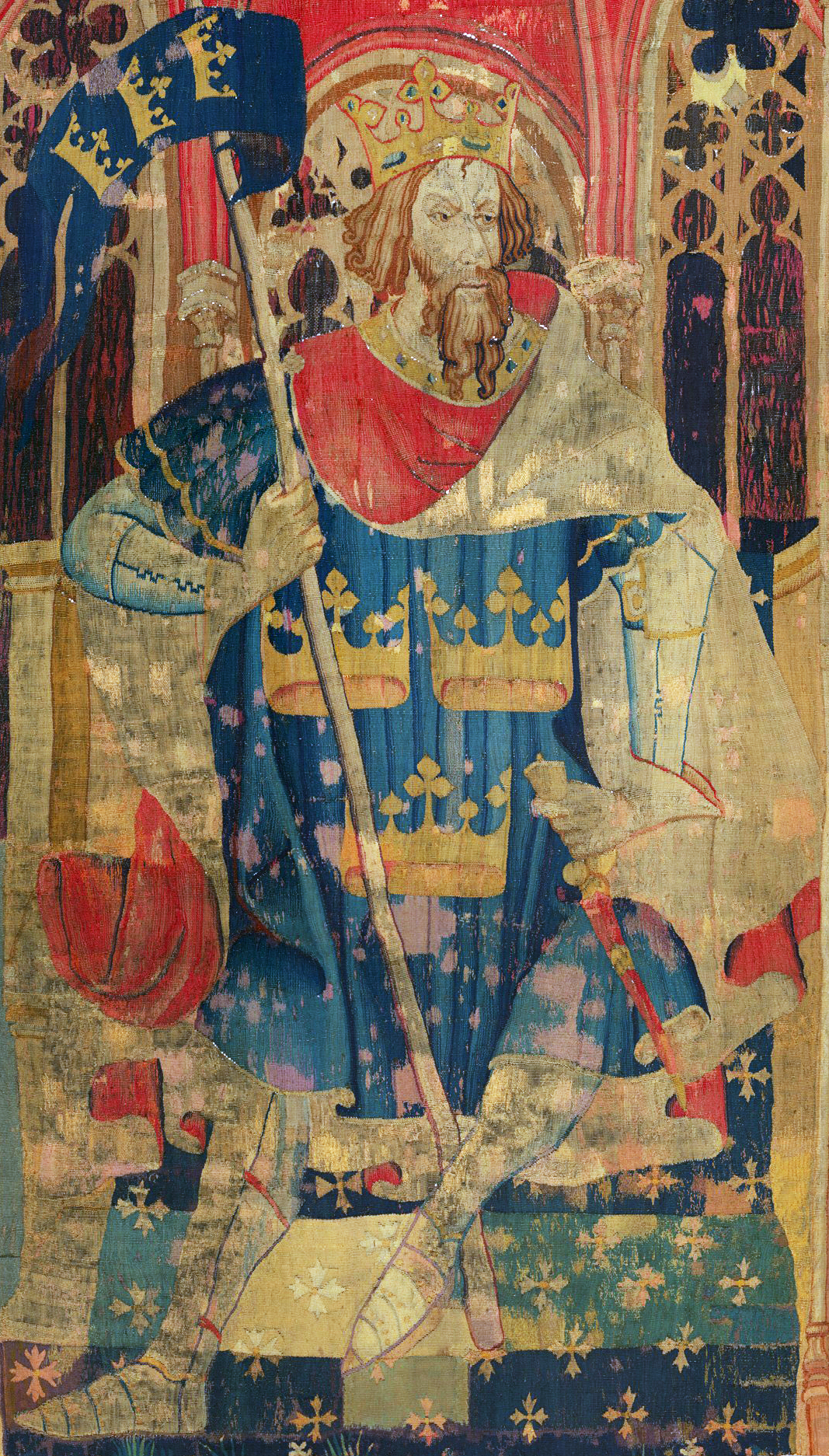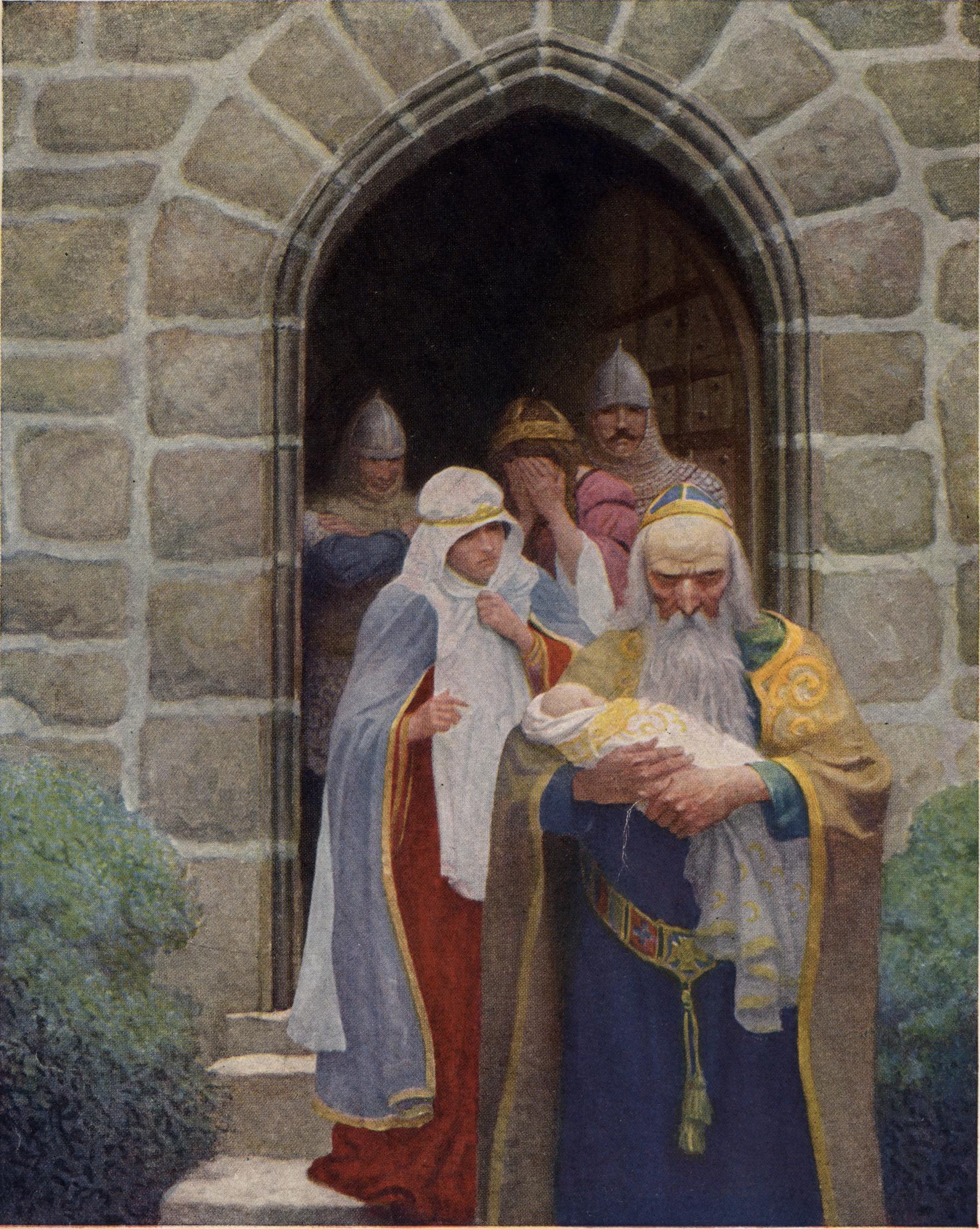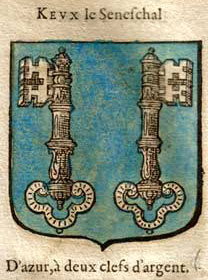|
Gartnait I
Gartnait son of Girom was a king of the Picts from 531 to 537. The ''Pictish Chronicle'' king lists have him ruling for six or seven years between Drest IV and Cailtram. Cailtram is said to have been Gartnait's brother and three sons of Girom are successively listed as king, although Drest son of Girom is not explicitly stated to have been a brother of Gartnait and Cailtram. Historian Damian Bullen has suggested that Gartnait is the historical figure behind the myth of King Arthur and that he had his residence in Rhynie in Aberdeenshire.Bullen, Damian (2021"King Arthur, King of Picts (529-536)"/ref> He identifies his mother Girom as Gigurnus, Gygurn or Igraine while his father Uudrost as Uther Pendragon, and king Cailtram who ruled after him as Sir Kay In Arthurian legend, Kay (, Middle Welsh ''Kei'' or ''Cei''; ; French: ''Keu''; Old French: ''Kès'' or ''Kex'') is King Arthur's foster brother and later seneschal, as well as one of the first Knights of the Round Tab ... [...More Info...] [...Related Items...] OR: [Wikipedia] [Google] [Baidu] |
King Of The Picts
The list of kings of the Picts is based on the Pictish Chronicle king lists. These are late documents and do not record the dates when the kings reigned. The various surviving lists disagree in places as to the names of kings, and the lengths of their reigns. A large portion of the lists, not reproduced here, belongs with the Scottish mythology, Caledonian or Irish mythology. The latter parts of the lists can largely be reconciled with other sources. Pictish kings Pictish kings ruled in northern and eastern Scotland. In 843 tradition records the replacement of the Pictish kingdom by the Kingdom of Alba, although the Irish annals continue to use ''Picts'' and ''Fortriu'' for half a century after 843. The king lists are thought to have been compiled in the early 8th century, probably by 724, placing them in the reigns of the sons of Der-Ilei, Bridei IV of the Picts, Bridei and Nechtan IV of the Picts, Nechtan.Woolf, "Pictish matriliny reconsidered", p. 153. Irish annals (the ... [...More Info...] [...Related Items...] OR: [Wikipedia] [Google] [Baidu] |
Drest IV
Drest son of Girom was a king of the Picts from possibly from 522 to 531. The ''Pictish Chronicle'' king lists associate him with Drest III Drest son of Uudrost or son of Uudrossig was a king of the Picts from 522 to 530. The ''Pictish Chronicle The Pictish Chronicle is a name used to refer to a pseudo-historical account of the kings of the Picts beginning many thousand years be .... Various reigns, separately and jointly, are assigned to the two Drests, varying from one to fifteen years. After the joint rule, this Drest appears alone in the lists with a reign of five or four years. Drest is the first of three possible brothers, all called son of Girom, found in the king lists, the other being his successors Gartnait I and Cailtram. References Sources * Anderson, Alan Orr; ''Early Sources of Scottish History A.D. 500–1286'', volume 1. Reprinted with corrections, Paul Watkins, Stamford, 1990. External links Pictish Chronicle 530s deaths Pictis ... [...More Info...] [...Related Items...] OR: [Wikipedia] [Google] [Baidu] |
Cailtram
Cailtram, son of Girom, was a king of the Picts possibly from 537 to 538. The ''Pictish Chronicle'' king lists have him ruling for one or six years between his brother Gartnait son of Girom and Talorc son of Muircholach. No two lists which give a possibly authentic version of his name agree on its form, variants including Cailtarni and Cailtaine. Later versions include Kelhiran, Kelturan and Kyburcan. He is the third son of Girom listed as king, although Drest son of Girom is not explicitly stated to have been a brother of Cailtram and Gartnait. References Sources * Anderson, Alan Orr Alan Orr Anderson (1879–1958) was a Scottish historian and compiler. The son of Rev. John Anderson and Ann Masson, he was born in 1879. He was educated at Royal High School, Edinburgh, and the University of Edinburgh. In 1908, after fiv ...; ''Early Sources of Scottish History A.D. 500–1286'', volume 1. Reprinted with corrections, Paul Watkins, Stamford, 1990. External ... [...More Info...] [...Related Items...] OR: [Wikipedia] [Google] [Baidu] |
King Of The Picts
The list of kings of the Picts is based on the Pictish Chronicle king lists. These are late documents and do not record the dates when the kings reigned. The various surviving lists disagree in places as to the names of kings, and the lengths of their reigns. A large portion of the lists, not reproduced here, belongs with the Scottish mythology, Caledonian or Irish mythology. The latter parts of the lists can largely be reconciled with other sources. Pictish kings Pictish kings ruled in northern and eastern Scotland. In 843 tradition records the replacement of the Pictish kingdom by the Kingdom of Alba, although the Irish annals continue to use ''Picts'' and ''Fortriu'' for half a century after 843. The king lists are thought to have been compiled in the early 8th century, probably by 724, placing them in the reigns of the sons of Der-Ilei, Bridei IV of the Picts, Bridei and Nechtan IV of the Picts, Nechtan.Woolf, "Pictish matriliny reconsidered", p. 153. Irish annals (the ... [...More Info...] [...Related Items...] OR: [Wikipedia] [Google] [Baidu] |
Pictish Chronicle
The Pictish Chronicle is a name used to refer to a pseudo-historical account of the kings of the Picts beginning many thousand years before history was recorded in Pictavia and ending after Pictavia had been enveloped by Scotland. Version A There are several versions of the Pictish Chronicle. The so-called "A" text is probably the oldest, the fullest, and seems to have fewer errors than other versions. The original (albeit lost) manuscript seems to date from the early years of the reign of Kenneth II of Scotland (who ruled Scotland from 971 until 995) since he is the last king mentioned and the chronicler does not know the length of his reign. This chronicle survives only in the 14th century Poppleton Manuscript. It is in three parts: # ''Cronica de origine antiquorum Pictorum'', an account of the origins of the Picts, mostly from the Etymologies of Isidore of Seville. # A list of Pictish kings. # '' Chronicle of the Kings of Alba''. It is evident that the latter two sections ... [...More Info...] [...Related Items...] OR: [Wikipedia] [Google] [Baidu] |
King Arthur
According to legends, King Arthur (; ; ; ) was a king of Great Britain, Britain. He is a folk hero and a central figure in the medieval literary tradition known as the Matter of Britain. In Wales, Welsh sources, Arthur is portrayed as a leader of the Sub-Roman Britain, post-Roman Britons in battles against the Anglo-Saxons in the late-5th and early-6th centuries. He first appears in two early medieval historical sources, the ''Annales Cambriae'' and the ''Historia Brittonum'', but these date to 300 years after he is supposed to have lived, and most historians who study the period Historicity of King Arthur, do not consider him a historical figure.Tom Shippey, "So Much Smoke", ''review'' of , ''London Review of Books'', 40:24:23 (20 December 2018) His name also occurs in early Welsh-language literature, Welsh poetic sources, such as ''Y Gododdin''. The character developed through Welsh mythology, appearing either as a great warrior defending Britain from human and supernatura ... [...More Info...] [...Related Items...] OR: [Wikipedia] [Google] [Baidu] |
Rhynie, Aberdeenshire
Rhynie (; ) is a village in Aberdeenshire, Scotland. It is on the A97 road, northwest of Alford. The Rhynie Chert is named after the village, as is the fossil plant genus '' Rhynia''. The Rhynie Chert is a sediment deposited in the Devonian period, contained important fossils that shows land ecosystem of the Devonian. The missionary, teacher and chocolatier Alexander Murdoch Mackay was born in Rhynie on 13 October 1849. Etymology The name ''Rhynie'' may involve an early Pictish ''rīg'' meaning "a king" (cf. Gaelic ''ríg/rí''; cf. Welsh ''rhi''). History Eight Pictish symbol stones have been found at Rhynie, including the "Rhynie Man", a tall boulder carved with a bearded man carrying an axe, possibly a representation of the Celtic god Esus, that was discovered in 1978. The "Rhynie Man" now stands inside Woodhill House (the headquarters of Aberdeenshire Council) in Aberdeen. In 2011 archaeological excavations at Rhynie, near the site of the " Rhynie Ma ... [...More Info...] [...Related Items...] OR: [Wikipedia] [Google] [Baidu] |
Aberdeenshire
Aberdeenshire (; ) is one of the 32 Subdivisions of Scotland#council areas of Scotland, council areas of Scotland. It takes its name from the Shires of Scotland, historic county of Aberdeenshire (historic), Aberdeenshire, which had substantially different boundaries. The Aberdeenshire Council area includes all of the areas of the historic counties of Aberdeenshire and Kincardineshire except the area making up Aberdeen City Council area, as well as part of Banffshire. The historic county boundaries are still officially used for a few purposes, namely land registration and Lieutenancy areas of Scotland, lieutenancy. Aberdeenshire Council is headquartered at Woodhill House in Aberdeen, making it the only Scottish council whose headquarters are located outside its jurisdiction. Aberdeen itself forms a different council area (Aberdeen City). Aberdeenshire borders onto Angus, Scotland, Angus and Perth and Kinross to the south, Highland (council area), Highland and Moray to the west a ... [...More Info...] [...Related Items...] OR: [Wikipedia] [Google] [Baidu] |
Igraine
In the Matter of Britain, Igraine () is the mother of King Arthur. Igraine is also known in Latin as Igerna, in Welsh as Eigr (Middle Welsh Eigyr), in French as Ygraine (Old French Ygerne or Igerne), in ''Le Morte d'Arthur'' as Ygrayne—often modernised as Igraine or Igreine—and in ''Parzival'' as Arnive. She becomes the wife of Uther Pendragon, after the death of her first husband, Gorlois. Legend In Geoffrey of Monmouth's ''Historia Regum Britanniae'', Igerna enters the story as the wife of Gorlois, Duke of Cornwall. In Thomas Malory's ''Le Morte d'Arthur'', her daughters by Gorlois are Elaine, Morgause and Morgan le Fay. In other works, the names, roles and even number of Arthur's half-sisters vary depending on the text (including none in the ''Historia'', in which Arthur has only a younger sister). In the '' Brut Tysilio'', Cador of Cornwall is their son. John Hardyng's ''Chronicle'' calls Cador Arthur's brother "of his mother's syde". Geoffrey describes her as ... [...More Info...] [...Related Items...] OR: [Wikipedia] [Google] [Baidu] |
Uther Pendragon
Uther Pendragon ( ; the Brittonic languages, Brittonic name; , or ), also known as King Uther (or Uter), was a List of legendary kings of Britain, legendary King of the Britons and father of King Arthur. A few minor references to Uther appear in Old Welsh language, Old Welsh Medieval Welsh literature, poems, but his biography was first written down in the 12th century by Geoffrey of Monmouth in his ''Historia Regum Britanniae'' (''History of the Kings of Britain''), and Geoffrey's account of the character was used in most later versions. He is a fairly ambiguous individual throughout the literature, but is described as a strong king and a defender of his people. According to Matter of Britain, Arthurian legend, Merlin magically Shapeshifting, disguises Uther to look like his enemy Gorlois, enabling Uther to sleep with Gorlois' wife Lady Igraine. Thus Arthur, "the once and future king", is an illegitimate child (though later legend, as found in Thomas Malory, Malory, emphasis ... [...More Info...] [...Related Items...] OR: [Wikipedia] [Google] [Baidu] |
Sir Kay
In Arthurian legend, Kay (, Middle Welsh ''Kei'' or ''Cei''; ; French: ''Keu''; Old French: ''Kès'' or ''Kex'') is King Arthur's foster brother and later seneschal, as well as one of the first Knights of the Round Table. In later literature he is known for his acid tongue and bullying, boorish behaviour, but in earlier accounts he was one of Arthur's premier warriors. Along with Bedivere, with whom he is frequently associated, Kay is one of the earliest characters associated with Arthur. Kay's father is called Sir Ector, Ector in later literature, but the Welsh accounts name him as Cynyr Ceinfarfog. Cai in Welsh tradition Cai or Cei is one of the earliest characters to be associated with the Arthurian mythology, appearing in a number of early Welsh texts, including ''Culhwch and Olwen, Culhwch ac Olwen'', ''Three Welsh Romances, Geraint fab Erbin'', ''Three Welsh Romances, Iarlles y Ffynnon'', ''Peredur fab Efrawg'', ''Breuddwyd Rhonabwy'', ''Pa gur, Pa Gur'', and the Welsh Tr ... [...More Info...] [...Related Items...] OR: [Wikipedia] [Google] [Baidu] |
Alan Orr Anderson
Alan Orr Anderson (1879–1958) was a Scottish historian and compiler. The son of Rev. John Anderson and Ann Masson, he was born in 1879. He was educated at Royal High School, Edinburgh, and the University of Edinburgh. In 1908, after five years of work sponsored by the Carnegie Trust, he published ''Scottish Annals from English Chroniclers'', a reasonably comprehensive compilation of sources about Scottish history before 1286 written either in England or by chroniclers born in England. Fourteen years later, he was able to publish the 2-volume work entitled ''Early Sources of Scottish History, A.D. 500 to 1286'', a similar but larger collection of sources, this time taken from non-English (mostly Gaelic) material. To a certain extent, the latter work overlapped with the compilations published by Skene's ''Chronicles of the Picts and Scots'' (Edinburgh, 1867), but both of Anderson's compilations differed from Skene's in that all were translated into English. Years o ... [...More Info...] [...Related Items...] OR: [Wikipedia] [Google] [Baidu] |




